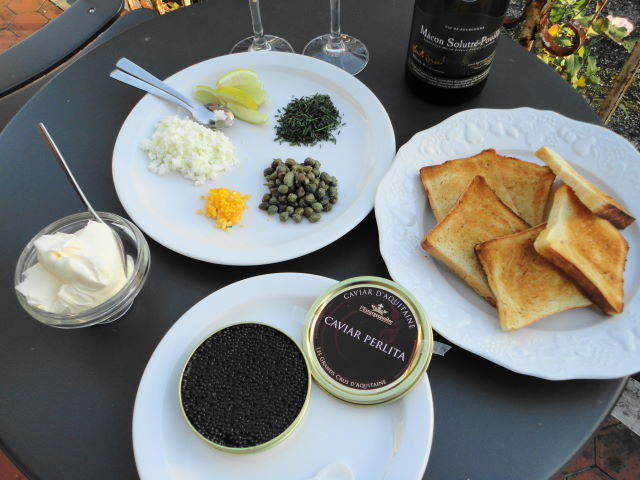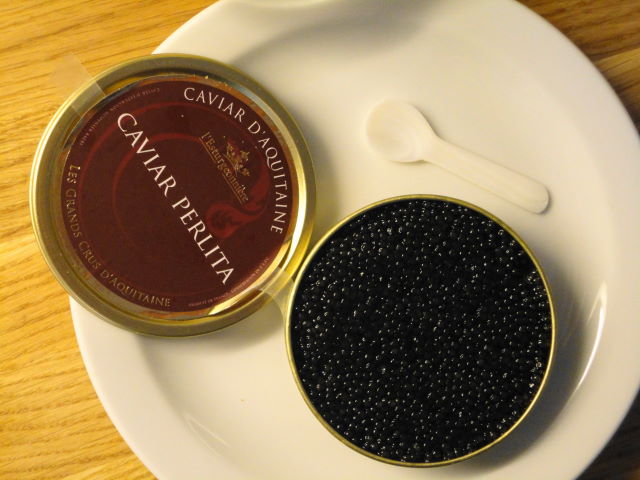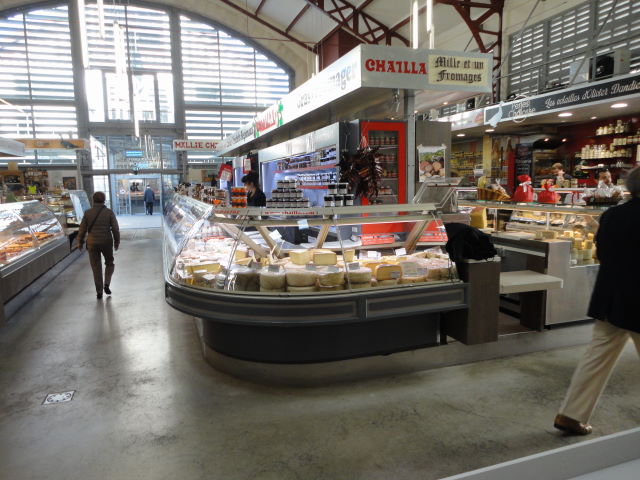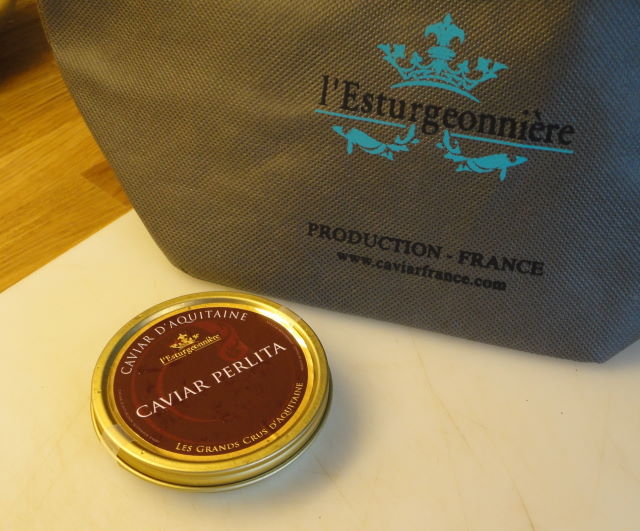Ever heard of caviar that is raised in France? With caviar from the Caspian Sea being either too expensive or morally murky ( Caspian Sea sturgeons have been on the endangered species list for a while) or just plain unavailable, many countries have seen growth in their farmed caviar industries, notably the U.S., Canada, Israel and Uruguay. Now France has joined the list as well.
Before the pollution of post WWII years, the French region of Aquitaine, and specifically the Gironde river, was known for its sturgeon fishery, although more for the meat than for the caviar. In the last 20 years or so, a number of companies have begun to invest in raising sturgeons in Aquitaine again,with the goal of producing French caviar of a quality to compete with Caspian Sea caviar. If you have been through an airport in London or Paris lately, you have probably seen the Prunier/Caviar House seafood bars. Prunier/Caviar House is owned by French luxury goods giant LVMH, which was one of the early investors in sturgeon farming in Aquitaine (LVMH also now owes the iconic Paris seafood restaurant Prunier, which has become a showcase for its culinary products. Prunier is an art deco jewel box, that warrants a visit for interior design buffs, even if just for a glass of champagne at it’s marble bar…if your budget allows, a champagne-addled lunch there is a once in a lifetime experience).
Caviar farming requires a huge investment of time and money. The sturgeon are raised in freshwater ponds that must be isolated from the river that feeds them to avoid returning polluting waste products. Construction of the pens and water processing plants is very costly
Additionally, sturgeons, which are very long lived, generally don’t produce roe until they are about 8 years old, so the investment of time and money to get them to producing stage is substantial. One outcome of this is that that caviar is now sometimes even harvested via cesarean section so that the fish can live to produce more in the future.
In the past, I have had the opportunity to try the several of the caviars from Prunier/Cavair House and found them very good, if very expensive. However, there are now a number of caviar producers in Aquitaine. A stay at the house in Orthez seemed like a good pretext to get acquainted with some of the local eggs.
While visiting Biarritz, we stopped by the Chez Chailla, a gourmet food vender that started as a fromagerie selling Basque cheeses in the 1980’s but has since branched out into a wide range of artisan foods from the Basque countries, including caviar from Aquitaine. The amiable owner, Monsieur Jean-Marie Pariset (who later helped us with a restaurant recommendation for lunch…his recommendation was enthusiastically seconded by two older women who waited patiently in line behind us) was happy to fill us in on the local caviar that he prefers and that he sells exclusively, from company called l’Esturgeonniere.
L’Esturgionniere raises Russian sturgeons in fresh water basins in near the Basin d’Achachon, which is locally famous for its oysters. Their facility includes a hatchery and raising ponds, and their business model includes not only caviar but sturgeon hatchlings sold to other producers and sustainably raised sturgeon filets for the table. Their caviar, which is sold under the name of “Caviar Perlita” is sort of mid-priced for French caviar – the 100 grams I purchased set me back about 150 euros (about 3.5 ounces for $190 which is pretty reasonable as caviar goes…I remember wistfully my days as Chef at Campagne restaurant when we could buy Caspian Ossetra for $34 an ounce…boy those days are gone!).

SO how was it? Pretty good is the short answer. The long answer is that, of the traditional types of Caspian caviar (sevruga, ossetra and beluga) the Perlita resembles Beluga caviar in its large egg size, jet black color and intense salty-creaminess. I think that the flavor is more bitter and less complex than my memories of Caspian beluga, but that might be just memory. Full disclosure, I have always preferred Ossetra caviar, which has a slightly smaller, firmer eggs of a deep brown-golden color that pop between your teeth. However, the Perlita made a lovely first course with a bottle of cold Macon so no complaints here. The traditional accompaniments include creme fraiche, capers, chopped hard boiled egg and wild chives from our yard.


